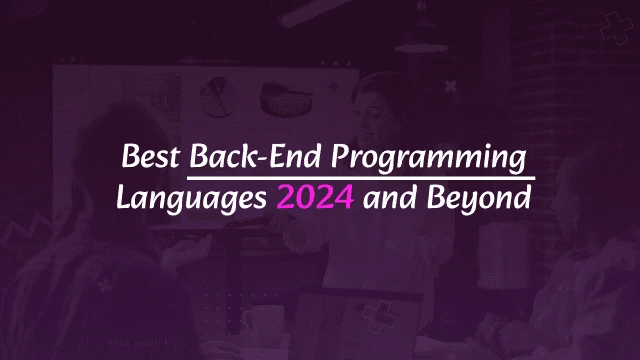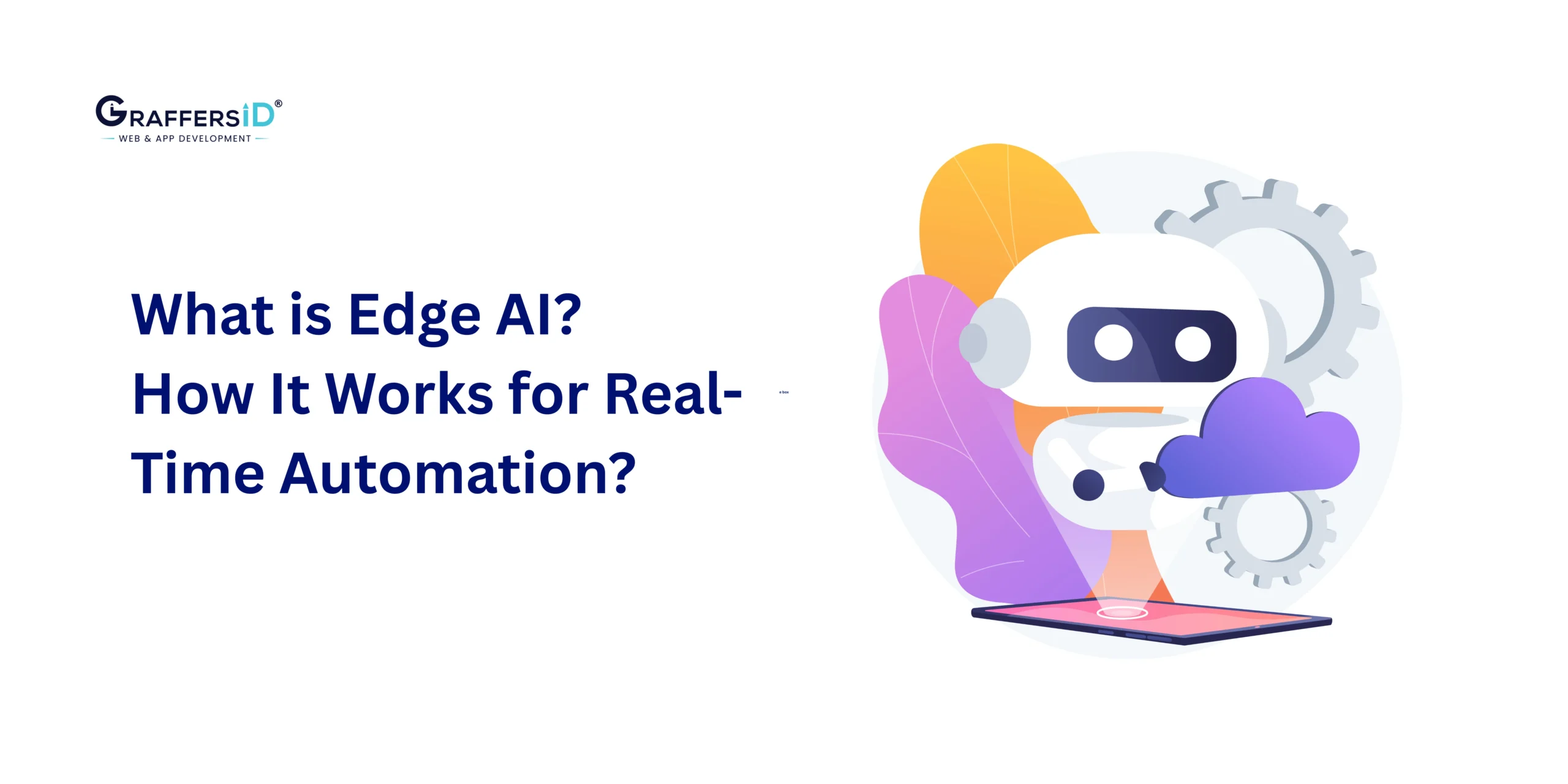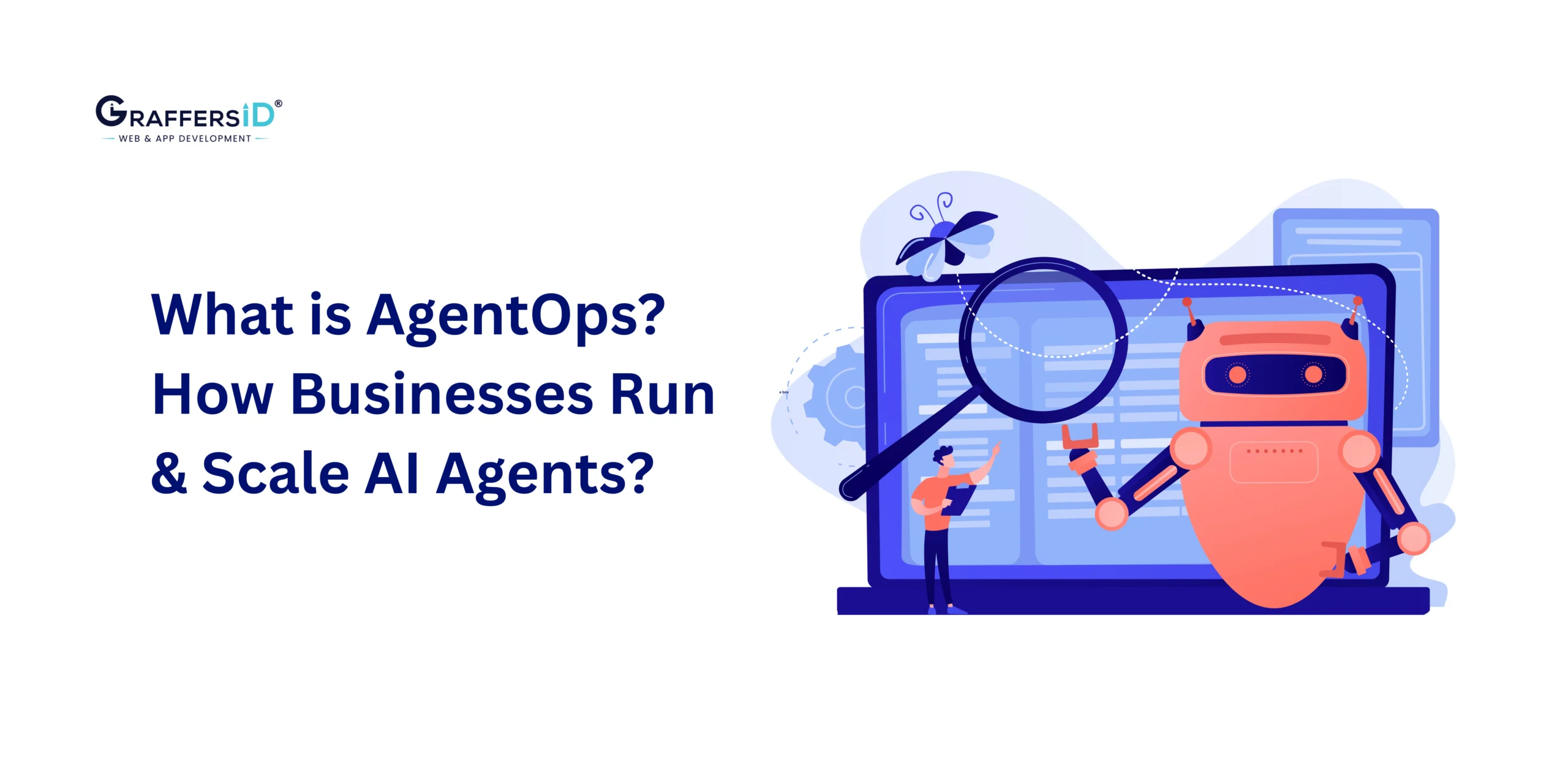Continuing along to 2025 and onwards, the need for effective, expandable, and versatile back-end programming languages keeps rising higher than ever. Check out this article for more insight about the top 2025 backend software development languages; their future possibilities will also be discussed.
Best Back-end Programming Language 2025

- Python:
Python has long been a favorite among developers for its simplicity, readability, and extensive libraries. In 2025, Python will remain a dominant force in the back-end development sphere. Its versatility allows developers to create robust web applications, APIs, and microservices with ease. According to the 2023 Stack Overflow Developer Survey, 43% of developers use Python, making it the third most popular programming language.
One of Python’s standout features is its strong community support and vast ecosystem of frameworks such as Django, Flask, and FastAPI. These frameworks streamline development, making Python an ideal choice for startups and large enterprises alike.
Looking ahead, Python’s focus on readability and productivity positions it as a frontrunner in back-end development for years to come. Its adoption in emerging technologies like machine learning and data science further solidifies its relevance in the digital era. Python is the preferred language for data science, used by 69% of data scientists and machine learning developers.
Pros:
- Easy to read and write, with a simple syntax.
- Extensive libraries and frameworks.
- Strong community support.
- Excellent for rapid prototyping.
- Highly versatile, used in web development, data science, AI, and more.
Cons:
- Slower execution compared to compiled languages.
- Higher memory consumption.
- Not ideal for mobile development.
- Limited in multi-threading due to the Global Interpreter Lock (GIL).
- JavaScript:
JavaScript continues to reign as a powerhouse in web development, both on the front end and back end. With the rise of Node.js, JavaScript has transcended its browser-bound origins to become a full-fledged back-end language. As of 2025, Node.js is used by 30 million developers worldwide, highlighting its widespread adoption. Applications like healthcare, media and entertainment are best build using this technology.
Node.js enables developers to write server-side code using JavaScript, offering seamless integration with front-end frameworks like React and Angular. This full-stack capability streamlines development workflows and fosters code re-usability across different layers of an application.
Moreover, JavaScript’s asynchronous nature enhances performance by handling concurrent operations efficiently. As we venture into the future, JavaScript’s adaptability and widespread adoption make it a staple choice for back-end development projects. According to W3Techs, JavaScript is used by 98.3% of all websites, confirming its dominance in web development.
Pros:
- Full-stack development capabilities.
- High performance with asynchronous processing.
- Large community and rich ecosystem of libraries.
- Universally supported by all browsers.
- Real-time application development with Node.js.
Cons:
- Can become complex and hard to debug.
- Inconsistent behavior across different browsers.
- Lack of static typing can lead to runtime errors.
- Callback hell in asynchronous code (though mitigated by async/await).
Go, also known as Golang, It has garnered significant attention in recent years, thanks to its focus on concurrency, performance, and simplicity. Developed by Google, Go strikes a balance between low-level system programming languages and high-level languages like Python and JavaScript.
The built-in concurrency features of Go make it an excellent choice for building scalable and concurrent systems. Its efficient garbage collection and strong standard library contribute to faster execution times and reduced resource consumption.
In 2025, Go continues to gain traction in back-end development, particularly for cloud-native applications and micro-services. Its ability to handle high traffic loads and maintain responsiveness positions it as a top contender in the back-end programming landscape. Go’s robust performance makes it a top choice for cloud-native applications and microservices, as seen in its adoption by tech giants like Uber, which uses Go to handle over 100 million API requests per second.
Pros:
- High performance and efficiency.
- Excellent concurrency support.
- Simple and clean syntax.
- Fast compilation times.
- Strong standard library.
Cons:
- Smaller community compared to other languages.
- Less mature libraries and frameworks.
- Manual memory management can be challenging.
- Limited support for GUI applications.
- Rust:
Rust has emerged as a game-changer in the programming world, renowned for its focus on safety, performance, and memory management. Although initially popular in systems programming, Rust’s capabilities extend to back-end development with frameworks like Actix and Rocket. In 2024, Rust remains a preferred choice for developers seeking reliability and performance, with the language being used by 15% of professional developers according to the Stack Overflow Developer Survey.
What sets Rust apart is its emphasis on preventing common programming errors such as null pointer dereference and data races through its ownership and borrowing system. This ensures code reliability and security, making Rust a compelling choice for building robust back-end systems.
In the years to come, Rust is poised to make significant strides in back-end development, especially in domains where safety and performance are paramount, such as fin-tech and cyber-security.
Pros:
- Memory safety without garbage collection.
- High performance close to C/C++.
- Prevents common bugs with its ownership model.
- Strong community and tooling support.
- Ideal for system-level programming.
Cons:
- Steeper learning curve.
- Slower compile times.
- Smaller ecosystem compared to more established languages.
- Less mature frameworks for web development.
- Java:
Java has long been synonymous with enterprise-grade applications, and its relevance in back-end development will endure in 2025. Despite the emergence of newer languages, Java remains a top choice for large-scale systems, thanks to its stability, scalability, and extensive ecosystem. As of 2024, Java is used by 35% of developers globally, maintaining its strong presence in the industry.
Frameworks like Spring Boot simplify Java development by providing essential tools and conventions for building robust back-end services. Java’s compatibility with cloud environments and adherence to object-oriented principles make it a dependable option for mission-critical applications.
While newer languages have entered the scene, Java’s established presence in enterprise environments ensures its continued utilization and support well into the future.
Pros:
- Robust and secure.
- Highly scalable.
- Extensive ecosystem and libraries.
- Platform-independent via JVM.
- Strong support for multithreading.
Cons:
- Verbose syntax.
- Slower startup times.
- Higher memory consumption.
- Complex concurrency management.
- Kotlin:
Kotlin, was founded in 2012 and backed by JetBrains; now it has gained popularity as a modern alternative to Java for back-end development. Its concise syntax, null safety features, and seamless interoperability with Java make it a favourite among developers. Kotlin’s usage has grown significantly, with over 5.5 million developers using it in 2024, up from 4.3 million in 2022.
With frameworks like Ktor and Spring Boot supporting Kotlin, developers can leverage its benefits for building scalable and maintainable back-end services. Kotlin’s growing community and tooling support contribute to its rising prominence in the programming ecosystem.
Pros:
- Concise and expressive syntax.
- Null safety reduces runtime errors.
- Full interoperability with Java.
- Strong support from Google for Android development.
- Growing ecosystem and community.
Cons:
- Smaller community compared to Java.
- Limited resources and learning materials.
- Slower compilation compared to Java.
- Can be challenging for developers new to JVM languages.
- TypeScript:
TypeScript, an extension of JavaScript with static typing capabilities, has garnered attention for its ability to catch errors early and improve code quality. While primarily used for front-end development with frameworks like Angular, TypeScript’s adoption in back-end development is on the rise.
Frameworks like NestJS leverage TypeScript’s features to create robust and scalable back-end applications. The combination of TypeScript’s type safety and JavaScript’s flexibility makes it a compelling choice for developers seeking a balance between productivity and reliability.
Pros:
- Static typing reduces runtime errors.
- Full compatibility with JavaScript.
- Enhanced code quality and maintainability.
- Strong tooling and IDE support.
- Popular with major frameworks like Angular and NestJS.
Cons:
- Added complexity compared to plain JavaScript.
- Compilation step required.
- Learning curve for developers new to static typing.
- Can be verbose.
- Ruby:
Ruby, known for its elegant syntax and developer-friendly conventions, remains a contender in back-end development circles. While its popularity has slightly waned compared to previous years, Ruby continues to power applications with frameworks like Ruby on Rails (RoR).
RoR’s convention over configuration approach streamlines development, making Ruby a preferred choice for startups and rapid prototyping. Although newer languages have emerged, Ruby’s focus on developer happiness and productivity ensures its relevance in certain niches.
Pros:
- Elegant and readable syntax.
- Convention over configuration reduces boilerplate code.
- Rapid development with Ruby on Rails.
- Strong community and libraries.
- Emphasis on developer happiness.
Cons:
- Performance limitations.
- Less popular than newer languages.
- Can be difficult to scale.
- Slower runtime execution.
- Swift:
Swift, Apple’s programming language for iOS and macOS development, has expanded its reach to server-side programming with frameworks like Vapor and Kitura. This extension enables developers to leverage their Swift expertise for building back-end services.
The safety features and performance optimizations inherent in Swift make it a compelling choice for applications requiring real-time responsiveness and security. As Swift gains traction beyond mobile development, its potential in back-end programming continues to grow.
Pros:
- High performance and safety.
- Modern syntax and features.
- Strong support for iOS/macOS development.
- Growing ecosystem for server-side development.
- Memory safety and management.
Cons:
- Smaller community compared to established back-end languages.
- Fewer libraries and frameworks.
- Limited cross-platform support.
- Learning curve for developers unfamiliar with Apple ecosystems.
- PHP:
PHP, a stalwart in web development for decades, continues to evolve with modern frameworks like Laravel and Symfony. These frameworks enhance PHP’s capabilities for building scalable, secure, and feature-rich back-end systems.
Despite initial criticisms, PHP has addressed performance and security concerns, solidifying its position in the back-end development landscape. Its ease of use, vast ecosystem of libraries, and compatibility with popular databases make PHP a viable choice for a wide range of projects.
Pros:
- Easy to learn and use.
- Extensive documentation and community support.
- Wide range of frameworks and libraries.
- Strong compatibility with databases.
- Highly effective for web development.
Cons:
- Historically criticized for security vulnerabilities.
- Inconsistent syntax and function names.
- Slower performance compared to newer languages.
- Less suitable for non-web applications.
The Future of Back-End Development: Trends to Watch in 2025
As we gaze into the future of back-end programming languages, several trends and technologies are poised to shape the landscape:
-
Serverless Computing:
The adoption of serverless architectures using platforms like AWS Lambda and Azure Functions is on the rise, offering scalability and cost-efficiency for back-end services.
-
Microservices Architecture:
Developers are increasingly embracing microservices to decouple application components, enabling agility, scalability, and easier maintenance.
-
Blockchain Integration:
With the growing interest in blockchain technology, back-end developers are exploring ways to integrate blockchain solutions into their applications for enhanced security and transparency.
-
AI and machine learning:
Back-end languages like Python are becoming instrumental in AI and machine learning projects, driving innovation in areas such as predictive analytics and natural language processing.
-
Containerization:
Technologies like Docker and Kubernetes continue to streamline the deployment and management of back-end services, fostering portability and scalability.
How do I choose the right back-end programming language for my project?
Choosing the right back-end programming language for your project is a crucial decision that can significantly impact its success, scalability, and maintenance. With a plethora of options available, each with its own strengths and weaknesses, it’s essential to understand your project’s requirements, your team’s expertise, and the long-term goals of your application. In this comprehensive guide, we’ll explore the key factors to consider when selecting a back-end programming language and provide insights into popular options to help you make an informed decision.
-
Understanding Your Project Requirements:
- Performance Needs: Consider the performance requirements of your application. If you’re building a real-time system or dealing with high traffic, languages like Go, Rust, or Java might be suitable due to their performance optimizations.
- Scalability: Evaluate the scalability needs of your project. Languages like Node.js, Python, and Ruby on Rails offer scalability options through frameworks and libraries designed for scaling applications horizontally or vertically.
- Database Integration: Determine the type of database your application will use (SQL, NoSQL) and choose a language that integrates well with your preferred database management system (DBMS).
Developer Skillset and Team Expertise:
- Language Familiarity: Consider the expertise of your development team. Choosing a language they are familiar with can lead to faster development, fewer bugs, and easier maintenance.
- Learning Curve: Evaluate the learning curve associated with each language. If your team needs to learn a new language, consider the time and resources required for training.
Community and Ecosystem Support:
- Active Community: Look for languages with active communities and strong ecosystem support. Active communities provide resources, libraries, and frameworks that can accelerate development and resolve issues faster.
- Frameworks and Libraries: Consider the availability of frameworks and libraries for your chosen language. Frameworks like Django (Python), Express (Node.js), and Laravel (PHP) offer robust features for web development.
Security Considerations:
- Security Features: Evaluate the built-in security features of each language. Languages like Java and C# offer strong security features, such as type safety and memory management, reducing vulnerabilities like buffer overflows.
- Community Security Practices: Consider the security practices and community support for security updates and patches. Active communities often address security vulnerabilities promptly.
Scalability and Performance:
- Concurrency Support: Consider the language’s support for concurrency and parallelism. Languages like Go and Erlang excel at concurrent programming, making them suitable for handling multiple tasks simultaneously.
- Performance Benchmarks: Review performance benchmarks and case studies relevant to your project’s requirements. Benchmarking can help you understand how each language performs under different loads and scenarios.
Long-Term Maintenance and Support:
- Longevity: Choose a language with long-term support and a roadmap for future development. Avoid languages that are declining in popularity or have limited community support.
- Compatibility: Consider the compatibility of the language with existing systems and technologies. Interoperability with other languages and systems can simplify integration and maintenance.
Cost Considerations:
- Licensing Costs: Evaluate any licensing costs associated with using specific languages or frameworks. Open-source languages like Python, Ruby, and Node.js are often cost-effective choices.
- Infrastructure Costs: Consider the infrastructure costs for hosting and scaling your application. Some languages may require more resources or specialized hosting environments.
Now, let’s delve into some popular back-end programming languages and their characteristics to help you narrow down your options:
Python:
- Strengths: Known for its readability, extensive libraries (Django, Flask), and versatility in web development, data science, and scripting.
- Considerations: While Python is easy to learn and widely adopted, it may not be the best choice for high-performance real-time applications due to its interpreted nature.
JavaScript (Node.js):
- Strengths: js offers event-driven, non-blocking I/O, making it suitable for scalable, real-time applications. It shares JavaScript syntax with front-end development, facilitating full-stack development.
- Considerations: js may face challenges with CPU-bound tasks and requires careful management of asynchronous code for optimal performance.
Java:
- Strengths: Java is renowned for its performance, scalability, and robust ecosystem. It’s widely used in enterprise applications, offers strong type safety, and has extensive frameworks like Spring.
- Considerations: Java’s learning curve may be steeper compared to interpreted languages, and its memory consumption can be higher, requiring efficient resource management.
Ruby:
- Strengths: Ruby on Rails is known for its developer-friendly syntax, rapid development capabilities, and convention over configuration approach. It’s suitable for building MVPs and web applications.
- Considerations: Ruby’s performance can be a concern for high-traffic applications, and its ecosystem may not be as extensive as some other languages.
Go (Golang):
- Strengths: Go is designed for concurrency, offering built-in support for parallelism and efficient resource utilization. It’s suitable for building scalable, performance-critical applications.
- Considerations: While Go excels in performance, its learning curve and ecosystem maturity may be factors to consider, especially for teams transitioning from other languages.
PHP:
- Strengths: PHP is widely used for web development, especially in content management systems (WordPress, Drupal). It offers a large number of libraries and frameworks for rapid development.
- Considerations: PHP’s reputation for security vulnerabilities in the past has improved with modern frameworks, but security practices and code quality remain essential considerations.
C# (ASP.NET):
- Strengths: C# is commonly used in enterprise applications, offering strong typing, scalability, and integration with Microsoft technologies. ASP.NET provides robust web development frameworks.
- Considerations: C# may have a higher learning curve for teams unfamiliar with Microsoft ecosystems, and licensing costs for certain Microsoft tools and services should be considered.
Conclusion:
In conclusion, choosing the right back-end programming language involves a thorough assessment of your project’s requirements, team capabilities, scalability needs, security considerations, and long-term maintenance goals. Each language has its strengths and considerations, so it’s essential to weigh these factors carefully and potentially consult with experienced developers or tech advisors to make an informed decision aligned with your project’s success.
As we venture further into 2025 and beyond, embracing these languages and staying attuned to emerging trends will be key to driving innovation and success in back-end development.




